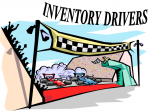According to the US government trucks moved 9.2 Billion tons of freight in 2011 (http://selectusa.commerce.gov/industry-snapshots/logistics-and-transportation-industry-united-states). This represented 67 % of all freight moved in the US. According to Transport Canada, in 2011 Long Haul trucking posted almost double the revenue for long haul versus short haul trucking. Bottom line – Long Haul Trucking is important and a huge part of our economy. But the trucking industry has a problem. There is a severe shortage of drivers and it is worse for long haul trucking. In an article by CTV and the Canadian Trucking Alliance (Feb 21, 2013) there will be a shortage of more than 30,000 drivers by 2020.
There are many reasons for this shortage (poor pay, poor job conditions, training requirements, etc.) but the real question is – given the importance of transportation to the economy and our life style, what can the industry do to resolve this problem? As in so many other industries, if people are not an option (safety, availability, cost…) is there a technological solution? I would suggest there is and that this technology exists today. As examples think about:
- The drone aircraft technology currently being deployed by the military and Search & Rescue groups.
- The radars and controls that are currently being introduced by car companies (collision avoidance, auto-park…).
- The GPS systems now available that analyse the speed of vehicles on-line to identify slow areas and suggest alternative routes.
Now what happens if we combine these technologies with a standard tractor trailer, videos and computers? Would it be possible to have a “driver” sitting in a central office, “driving” a truck on the road that is driving itself, just like they fly drones? If the driver gets tired, needs a break, lunch or even at the end of a shift, a different driver can take over and the truck keeps moving, thereby decreasing downtime and shortening transit time. As the technology gets better it would even be possible for the “driver” to monitor multiple trucks on the road. The lighter the traffic or conditions the more trucks that could be monitored by one person. In addition to the reduced requirements for long haul drivers (in essence they all become short haul) there would be reduced cost due to fewer hotels, less food, shorter transit time (lead time), better utilization of equipment and many other possible cost savings.
Obviously there are some potential downsides to this plan, the largest being acceptance by government and other drivers on the road. (It might be kind of scary to look up and see a truck coming up behind you with no driver visible.) Certainly, using drone trucks in an urban environment will be problematic for quite a while yet but the drones could be used between cities and the trailers switched to people driven cabs at terminals close to the destination. A bigger problem would be the overcrowding and infrastructure problems currently showing up in our road systems but that would be a good topic for a different post. The point of this post is not to introduce this concept tomorrow but to get people thinking and talking about alternatives. This one would maintain the speed and efficiency of the trucking industry, help reduce costs and help resolve the issue of a potential trucker shortage.
So, in answer to the original question – Are long haul truckers obsolete? Certainly not in the short term but if the driver shortage, infrastructure and other issues are not resolved then companies will need to find better ways to move their material. For the trucking industry to survive and grow, they need to find new and innovative ways to move that material quickly and cost effectively.
Having issues with your inventory?
Do you understand how logistics affects your inventory levels? Do you need help understanding and getting control of your inventory? Contact Ed White at Jade Trillium Consulting to discuss whether we can help your organization and how best to proceed.



